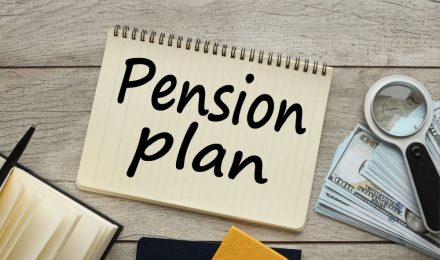The Role of Renewable Energy in the US
Renewable Energy has grown increasingly popular in the United States and the world as more countries focus on protecting the planet. In the 18th century, deforestation was the norm as wood played an essential role in everything, from making meals to light.
However, by the 19th century, the focus began to shift to other energy sources like petroleum, fossil fuels, coal, and natural gas. Leading up to the ’90s, wood and hydroelectric power were the most common forms of renewable energy.
Things have changed drastically since that era, with energy usage in the US increasing exponentially through sources like solar, bio fuels, geothermic, and wind energy. The use of these sources far outweighed hydro power and wood put together. After a nearly ten-year period starting in the year 2000, the United States’ use of wind, bio, and solar power tripled.
Last year alone, just over 11 percent of energy consumption in the United States came from renewable energy. It would be the same number in quadrillions when measuring the thermal unit. Electricity companies were responsible for more than 50% of U.S. renewable power usage in 2019, with just under 20 percent of the country’s electricity creation achieved through renewable energy.
The reason that renewable energy is so vital to the US is a significant part in reducing emissions from the dreaded greenhouse gas, which pollutes the air. Fossil fuel is one of the main contributors to greenhouse gas and but the use of renewable energy helps reduce the need for fossil and the carbon dioxide it leaves in the atmosphere. According to the Energy Information Administration, they expect the consumption of renewable energy to increase even more over the next 30 years.
Requirements for Renewable Energy Programs
The first requirement is a desire to be involved. It’s that easy. Investing in or trying to create your renewable energy sources can earn consumers many incentives from every level of the government. Even Utility companies are weighing in, hoping that they can purchase the energy from the consumers. Anybody, who wants to be a part of a renewable energy program or start one, can simply go to The Database of State Incentives for Renewables & Efficiency (DSIRE) website. On this site, everything related to the requirements and benefits of renewable energy is outlined.
Government Financial Incentives
Have you always had an idea of saving electricity or merely creating a renewable energy source? The federal government will give you a tax break, loans, and grants, once your proposed technology venture qualifies. The stimuli offered by the federal government are tax credits for Residential energy, Renewable Electricity Production, and Investment. Loans and grants, on the other hand, come from various government agencies, including the Department of Energy. Besides, almost every state gives you a stimulus when choosing to add renewable energy equipment to your home or business.
Renewable Standards
Most states now require that the sale of electricity in states come partially from a Renewable Energy source. That program is known as a Renewable Portfolio Standard (RPS), which is mandatory for some countries. Other states invite people and companies to volunteer to meet their goals. To adhere to RPS procedures will sometimes propose or enable the trading of Renewable Energy Certificates (REC).
What are RECs?
RECs are financial products ready for sale or to be bought or exchanged that enables a buyer to compensate for renewable energy generation without literally receiving the energy from a renewable energy origin. RECs are the most readily available commodity. They can be used by electric companies to conform to government RPS. Consumers, on the other hand, can get green certificates allowing them to buy renewable energy generation in regions where local power companies have no green power.
Connecting Your Renewable Energy Source to The Utility Line
Connecting your power source to that of your utility company is very much legal. It is called Net metering, and the renewable energy structures on the customer’s properties must be qualified. The Renewable source is then connected to the power company’s grid. What happens now is that the customer only pays for whatever amount of electricity it used from the utility company’s grid. In some regions, the electric companies are willing to purchase the extra energy from the consumer’s renewable energy source.
Up to a year ago, 40 states, including the country’s capital, had made net metering mandatory. A handful of states have compensation policies for renewable energy being circulated within their state, not involving net metering. Another five are still working out the kinks but do not intend to go the net metering route. Only two countries have no rules whatsoever regarding, and a few electricity companies have capitalized on that.
What About The Tariffs?
Many states and their electric companies have created specific fees for acquiring electricity from special categories of renewable energy networks. The cost is known as Feed-in Tariffs (FITs), and are substantially more significant than the typical electricity price. The point of FIT implore the development of specific types of renewable energy sources
Buying Green Power
Consumers in practically all the of the United States are able to acquire green power, which means power produced from special categories of renewable power rsources. A vast number of are voluntary projects which encompass the physical or controlled release of the electricity production source to the consumer or electricity company.
Ethanol and other renewable machine energy
Numerous federal and local government regulations and stimuli have been established for the generation, exchange, and use of biodiesel. It’s the same case for Ethanol and other energies formulated from biomass. The federal law expects that thirty six billion gallons of bio energy must be consumed annually by the next two years.
Some local governments have established their own renewable power laws or regulations. Meanwhile some federal proposals furnish monetary assistance and inducements for people who generate ethanol and other bio energies.
The Role of Renewable Energy in the US
Renewable Energy has grown increasingly popular in the United States and the world as more countries focus on protecting the planet. In the 18th century, deforestation was the norm as wood played an essential role in everything, from making meals to light.
However, by the 19th century, the focus began to shift to other energy sources like petroleum, fossil fuels, coal, and natural gas. Leading up to the ’90s, wood and hydroelectric power were the most common forms of renewable energy.
Things have changed drastically since that era, with energy usage in the US increasing exponentially through sources like solar, bio fuels, geothermic, and wind energy. The use of these sources far outweighed hydro power and wood put together. After a nearly ten-year period starting in the year 2000, the United States’ use of wind, bio, and solar power tripled.
Last year alone, just over 11 percent of energy consumption in the United States came from renewable energy. It would be the same number in quadrillions when measuring the thermal unit. Electricity companies were responsible for more than 50% of U.S. renewable power usage in 2019, with just under 20 percent of the country’s electricity creation achieved through renewable energy.
The reason that renewable energy is so vital to the US is a significant part in reducing emissions from the dreaded greenhouse gas, which pollutes the air. Fossil fuel is one of the main contributors to greenhouse gas and but the use of renewable energy helps reduce the need for fossil and the carbon dioxide it leaves in the atmosphere. According to the Energy Information Administration, they expect the consumption of renewable energy to increase even more over the next 30 years.
Requirements for Renewable Energy Programs
The first requirement is a desire to be involved. It’s that easy. Investing in or trying to create your renewable energy sources can earn consumers many incentives from every level of the government. Even Utility companies are weighing in, hoping that they can purchase the energy from the consumers. Anybody, who wants to be a part of a renewable energy program or start one, can simply go to The Database of State Incentives for Renewables & Efficiency (DSIRE) website. On this site, everything related to the requirements and benefits of renewable energy is outlined.
Government Financial Incentives
Have you always had an idea of saving electricity or merely creating a renewable energy source? The federal government will give you a tax break, loans, and grants, once your proposed technology venture qualifies. The stimuli offered by the federal government are tax credits for Residential energy, Renewable Electricity Production, and Investment. Loans and grants, on the other hand, come from various government agencies, including the Department of Energy. Besides, almost every state gives you a stimulus when choosing to add renewable energy equipment to your home or business.
Renewable Standards
Most states now require that the sale of electricity in states come partially from a Renewable Energy source. That program is known as a Renewable Portfolio Standard (RPS), which is mandatory for some countries. Other states invite people and companies to volunteer to meet their goals. To adhere to RPS procedures will sometimes propose or enable the trading of Renewable Energy Certificates (REC).
What are RECs?
RECs are financial products ready for sale or to be bought or exchanged that enables a buyer to compensate for renewable energy generation without literally receiving the energy from a renewable energy origin. RECs are the most readily available commodity. They can be used by electric companies to conform to government RPS. Consumers, on the other hand, can get green certificates allowing them to buy renewable energy generation in regions where local power companies have no green power.
Connecting Your Renewable Energy Source to The Utility Line
Connecting your power source to that of your utility company is very much legal. It is called Net metering, and the renewable energy structures on the customer’s properties must be qualified. The Renewable source is then connected to the power company’s grid. What happens now is that the customer only pays for whatever amount of electricity it used from the utility company’s grid. In some regions, the electric companies are willing to purchase the extra energy from the consumer’s renewable energy source.
Up to a year ago, 40 states, including the country’s capital, had made net metering mandatory. A handful of states have compensation policies for renewable energy being circulated within their state, not involving net metering. Another five are still working out the kinks but do not intend to go the net metering route. Only two countries have no rules whatsoever regarding, and a few electricity companies have capitalized on that.
What About The Tariffs?
Many states and their electric companies have created specific fees for acquiring electricity from special categories of renewable energy networks. The cost is known as Feed-in Tariffs (FITs), and are substantially more significant than the typical electricity price. The point of FIT implore the development of specific types of renewable energy sources
Buying Green Power
Consumers in practically all the of the United States are able to acquire green power, which means power produced from special categories of renewable power rsources. A vast number of are voluntary projects which encompass the physical or controlled release of the electricity production source to the consumer or electricity company.
Ethanol and other renewable machine energy
Numerous federal and local government regulations and stimuli have been established for the generation, exchange, and use of biodiesel. It’s the same case for Ethanol and other energies formulated from biomass. The federal law expects that thirty six billion gallons of bio energy must be consumed annually by the next two years.
Some local governments have established their own renewable power laws or regulations. Meanwhile some federal proposals furnish monetary assistance and inducements for people who generate ethanol and other bio energies.



